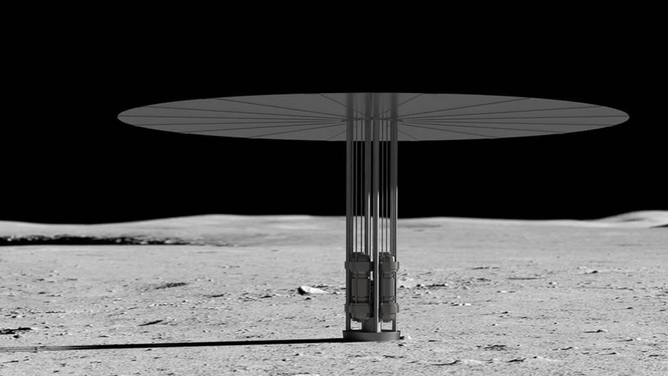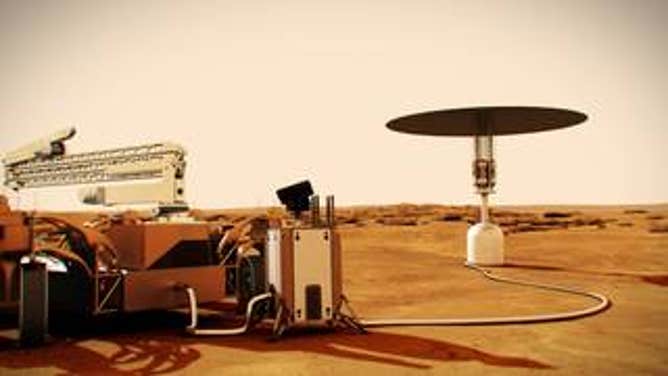NASA wants to put a nuclear reactor on the moon
The space agency and the U.S. Department of Energy have selected three design concept proposals for a fission surface power system for a demonstration on the moon

Fission surface power systems – depicted in this conceptual illustration – could provide reliable power for human exploration of the Moon under Artemis. Credits: NASA
NASA is one step closer to finalizing nuclear power some 238,900 miles away from Earth.
The space agency and the U.S. Department of Energy have selected three design concept proposals for a fission surface power system that would be stationed on the moon.
The hope is that a nuclear reactor would produce the power needed to operate rovers, conduct experiments and help support life.
Scientists say that the concepts for the technology will benefit future exploration under the Artemis umbrella and will be ready to launch by the end of the decade.
HOW TO WATCH FOX WEATHER ON TV
The contracts fund the development of initial design concepts for a 40-kilowatt class fission power system planned to last at least 10 years in the lunar environment and valued at approximately $5 million each, NASA says. Forty kilowatts of power is enough to run 30 households for ten years continuously.

Illustration of a nuclear fission power system on Mars.Credits: NASA
The Department of Energy's Idaho National Laboratory will award 12-month contracts to the following companies to each develop preliminary designs:
- Lockheed Martin of Bethesda, Maryland – The company will partner with BWXT and Creare.
- Westinghouse of Cranberry Township, Pennsylvania – The company will partner with Aerojet Rocketdyne.
- IX of Houston, Texas, a joint venture of Intuitive Machines and X-Energy – The company will partner with Maxar and Boeing.
"The Fission Surface Power project is a very achievable first step toward the United States establishing nuclear power on the Moon," said Idaho National Laboratory Director John Wagner. "I look forward to seeing what each of these teams will accomplish."
"Plentiful energy will be key to future space exploration," said Jim Reuter, associate administrator for NASA's Space Technology Mission Directorate (STMD) in Washington. "I expect fission surface power systems to greatly benefit our plans for power architectures for the Moon and Mars and even drive innovation for uses here on Earth."
50-YEAR-OLD FROZEN MOON SAMPLES TO HELP NASA'S FUTURE MISSIONS
The system will be relatively small and lightweight compared to other power systems. Fission systems are reliable and could enable continuous power regardless of location, sunlight and other natural environmental conditions.
NASA turns its attention to the moon
NASA is planning for new exploration of Earth's moon.
NASA says that phase one of the program will provide them with critical information from an industry that can lead to the joint development of a complete flight-certified fission power system.
WITH NASA'S MOON ROCKET TESTING COMPLETE A SUMMER ARTEMIS-1 LAUNCH IS WITHIN REACH
"Developing these early designs will help us lay the groundwork for powering our long-term human presence on other worlds," Reuter said.
Fission surface power technologies will also help NASA mature nuclear propulsion systems that rely on reactors to generate power and could potentially be used in deep space exploration missions.
CLICK HERE TO GET THE FOX WEATHER UPDATE PODCAST
Be sure to download the FOX Weather app to track any storms in your area and receive potentially life-saving weather alerts issued by the National Weather Service. The free FOX Weather livestream is also available 24/7 on the website and app and on your favorite streaming platform. The FOX Weather Update podcast also provides weather information for the entire country.
